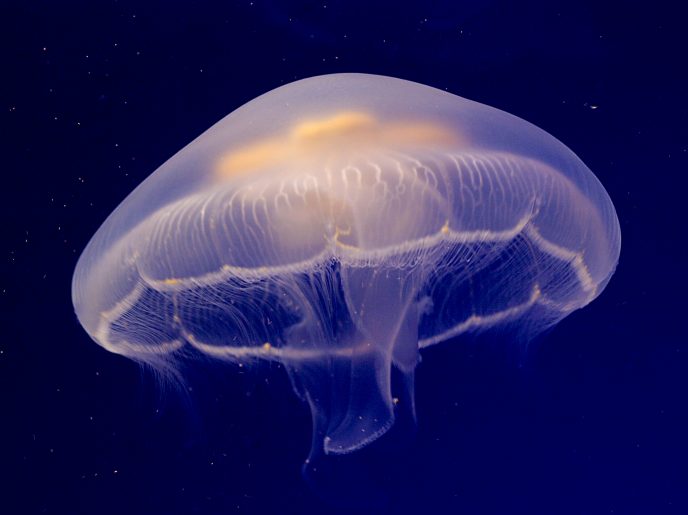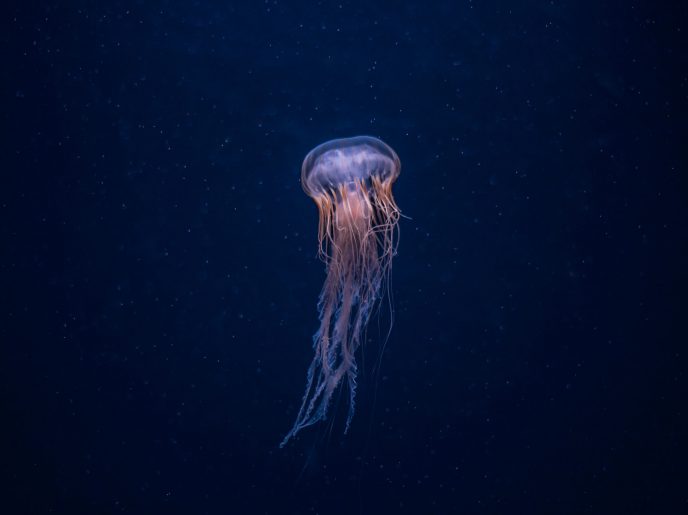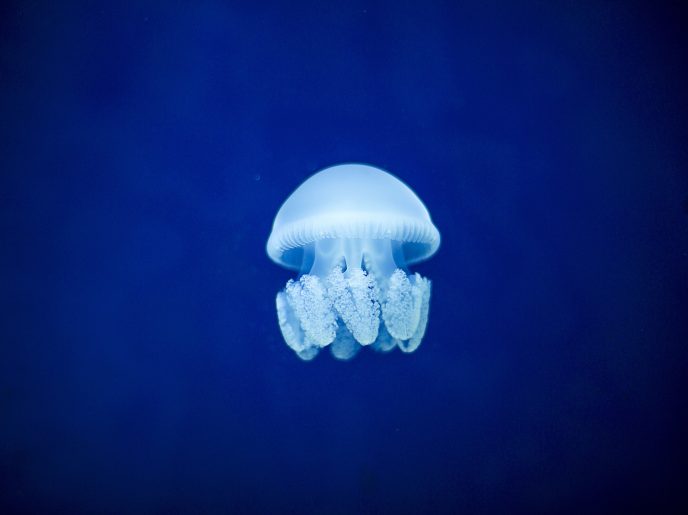Jellyfish
- Home
- Intervenants-FDM
- Jellyfish
The jellyfish, an animal that stings!
Jellyfish belong to the Cnidaria phylum, which comes from the Greek word Cnidae , literally meaning “stinging”, and includes sea anemones, cerianthus and reef-building corals, as well as gorgonians, alcyons and jewel coral.
Are jellyfish immortal?
Organized like an umbrella, the body of a jellyfish is composed of an umbrella, which lets hang, in its center, the manubrium ended by the mouth. The umbrella is bordered by filaments, called tentacles.
There is a great diversity of jellyfish, nearly a thousand species ranging from a few millimetres (75% of jellyfish are invisible to the naked eye) to two metres in diameter.
The shapes are also very varied: round, square, flat, domed, massive or aerial… Their periphery can be smooth or lobed, their tentacles absent (as in rhizostomes) or very numerous (up to 800 in Cyanea).
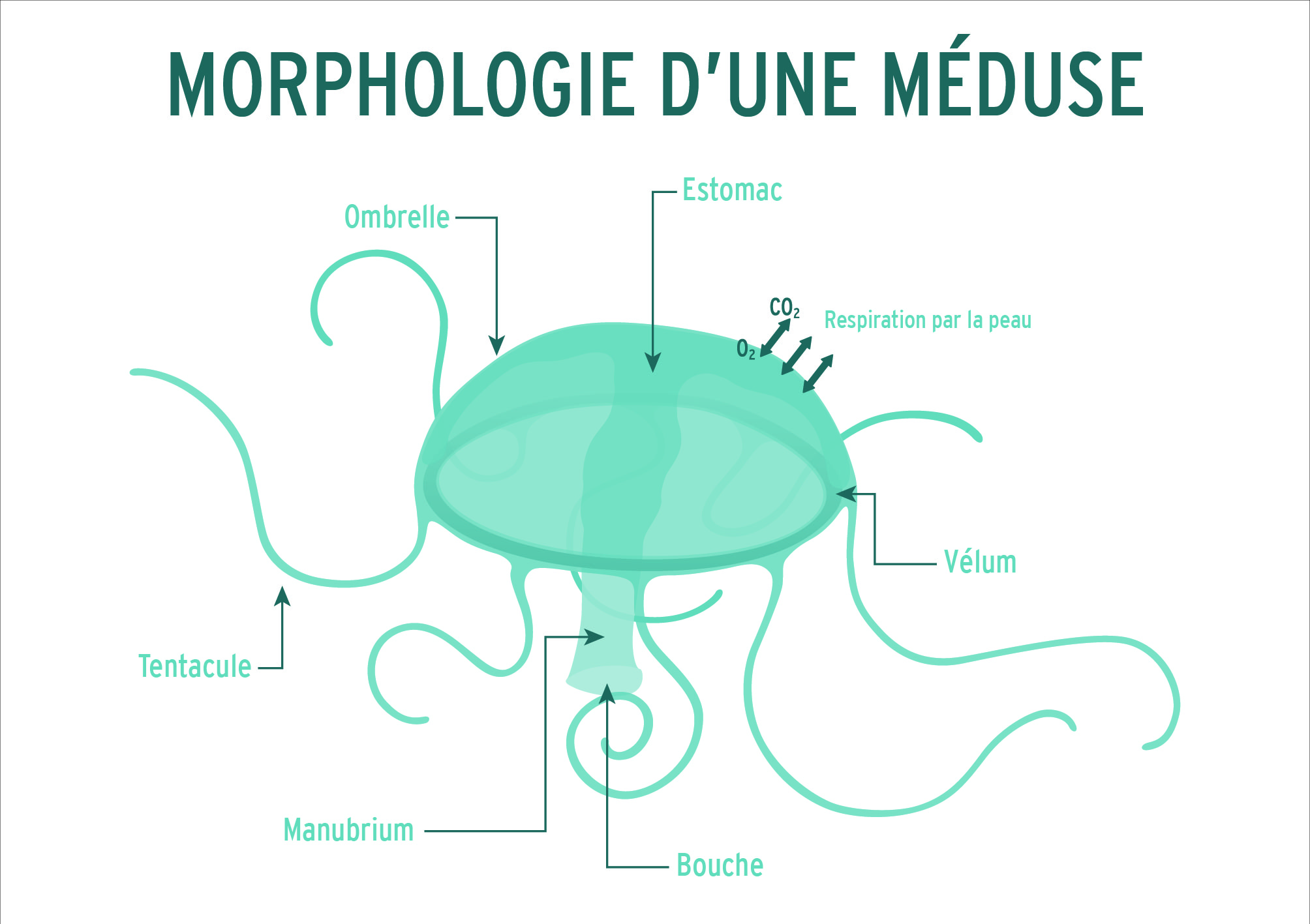
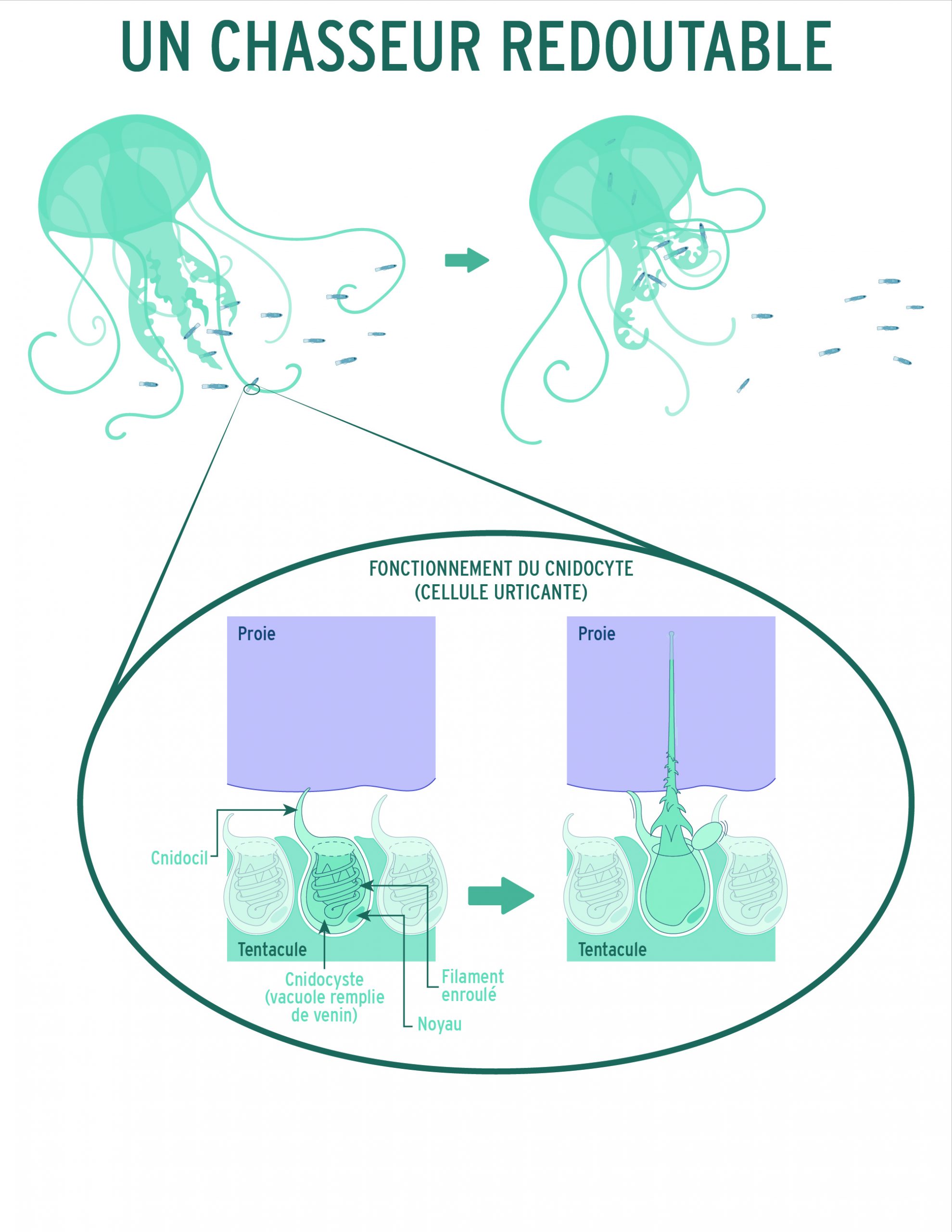
Why
Do jellyfish sting?
The main characteristic of Cnidaria is their stinging cells, called cnidocytes, present on the tentacles but also sometimes on the whole jellyfish.
Jellyfish are best known to the general public for the annoyance they cause bathers. If the species present on our coasts are at the origin of many inconveniences, other species, like the tropical cubomedus can be infinitely more dangerous, even deadly.
The cnidocyte contains a vacuole, a pocket filled with venom in which a mini-harpoon (a hollow spiral filament studded with spines) is immersed, controlled by a tiny hair, the cnidocil. When the cnidocil touches a prey, the mini-harpoon is expelled, inoculating its venom.
The cnidocytes are lost as they remain attached to the prey, but new cells are regenerated within 24 hours. These cells make their own toxin and filament.
What to do in case of jellyfish stings?

A ROBUST LIFE CYCLE ... TO IMMORTALITY
Despite their apparent fragility, jellyfish are remarkably robust, close to immortality. Their originality – and certainly their greatest asset – is to have an adaptive life cycle. Their mode of reproduction (sexual and asexual) is adapted to environmental conditions.
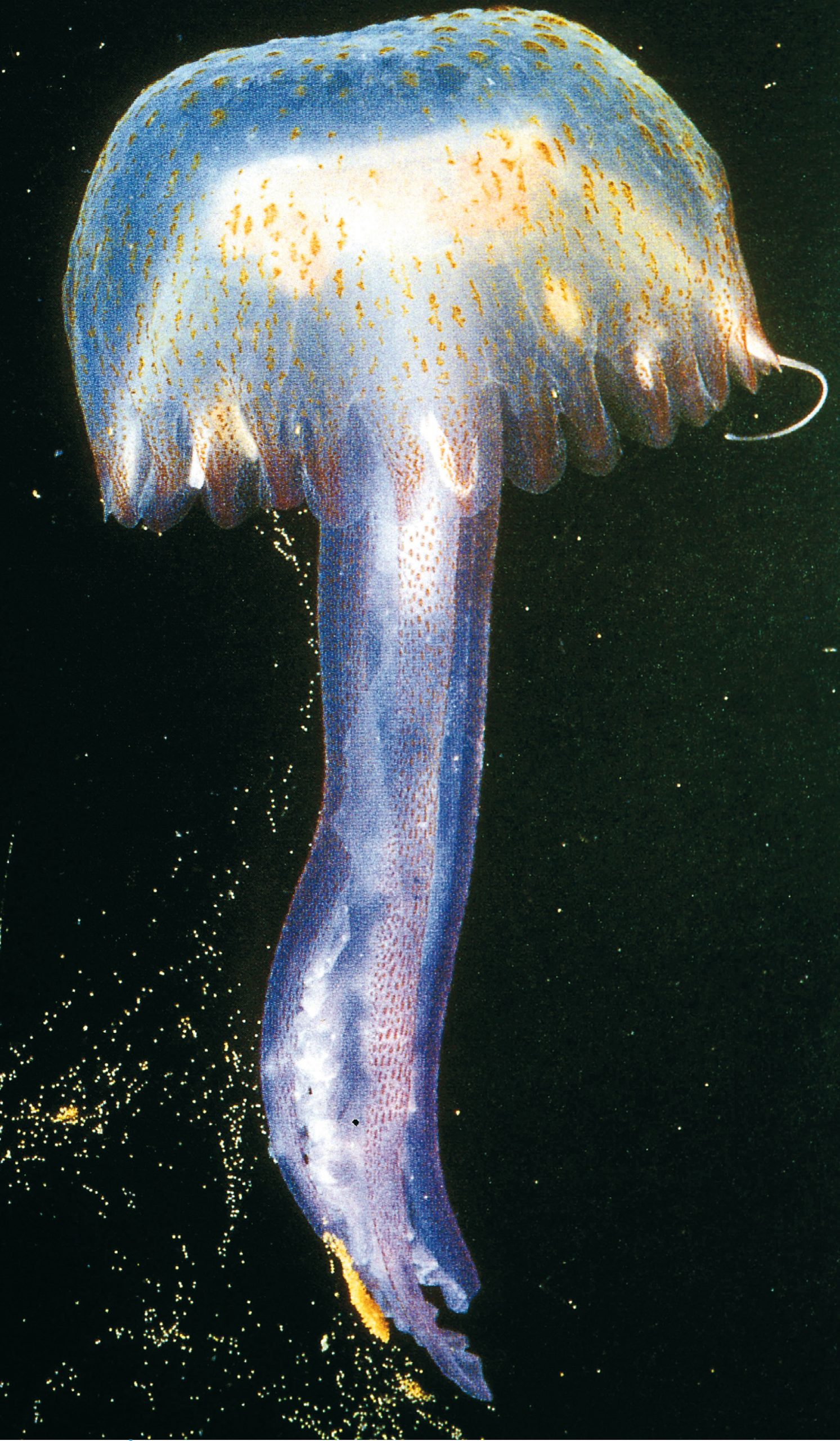

The gelling of the oceans
Most specialists now agree that the ocean is becoming gelatinous: gelatinous organisms, primarily jellyfish, are proliferating in a sometimes spectacular way, breaking with the old cycles of appearance and disappearance linked to climatic conditions.
However, the impact of jellyfish is far from being limited to the leisure sector, and many maritime activities are now penalized by their armadas criss-crossing the seas: beach closures, ruined fisheries, massive loss of fish in aquaculture farms, shutdown of nuclear power plants.
Spectacular assaults that often make the headlines.
FROM THE ORIGIN OF THE SENSES TO THE NOBEL PRIZE
Despite their apparent simplicity, jellyfish have much to teach us. While the group of cnidarians separated from other animals more than 600 million years ago, jellyfish possess sensory sensors, light or balance, strangely similar to ours.
In order to orient themselves in open water, without landmarks, some species of jellyfish have tiny organs, the statocysts, which are true models of the organ of balance, located in the inner ear in humans.
In the most advanced jellyfish, the statocysts are grouped with an olfactory fossa and visual cells in an organ called rhopalia. We can consider that certain jellyfish have a premise of what will become the brain in other species.
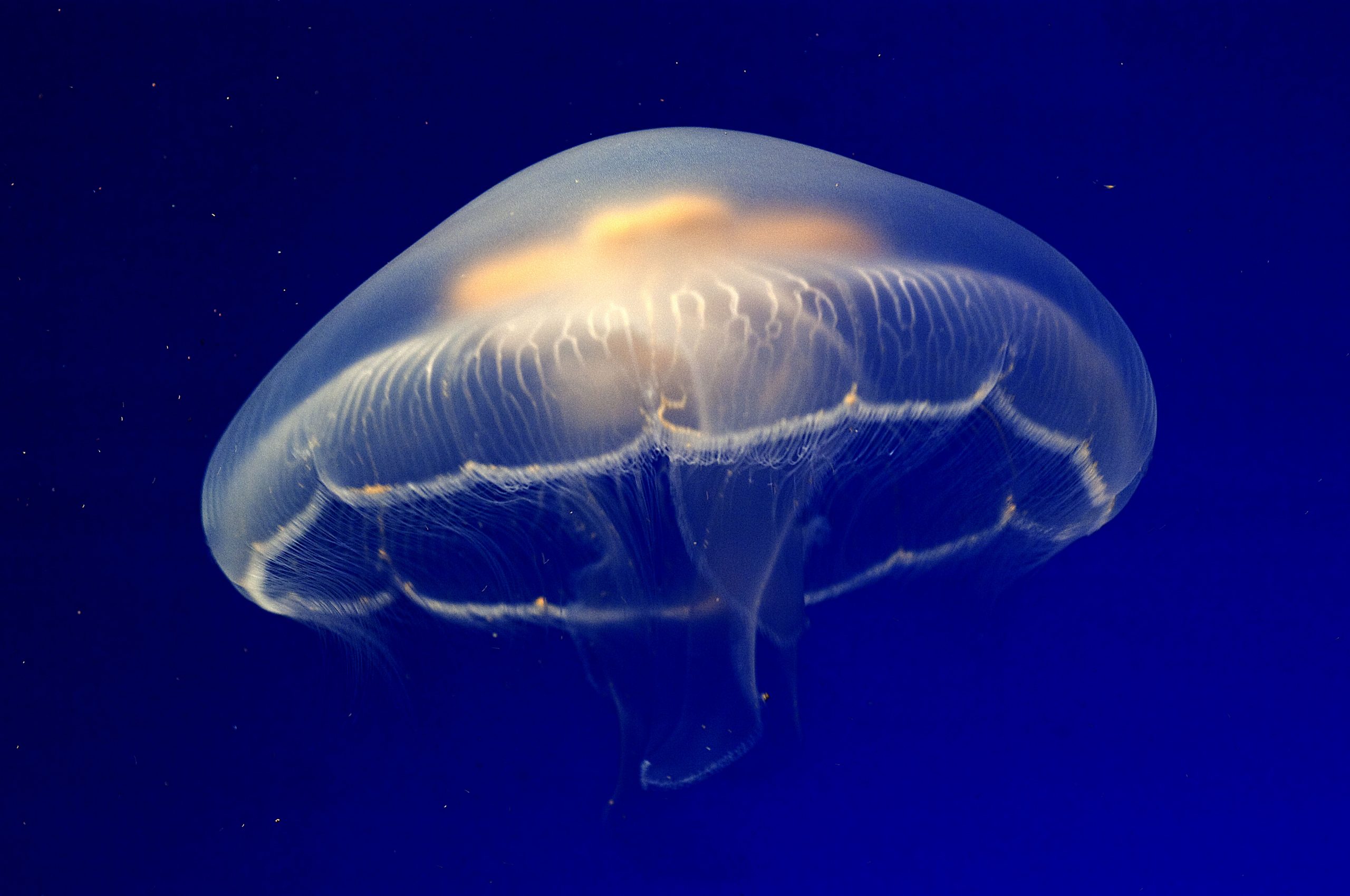

MEdUSES IN HISTORY
OF SCIENCE
It’s no coincidence that jellyfish are called that. Carl Linnaeus, the Swedish naturalist who, in the 18th century, catalogued, named and classified in a systematic way most of the living species known at his time, recognized in these spherical animals surrounded by tentacles, the famous jellyfish of the Greek myth with the hair of snake which petrifies by its simple glance.
Find the history of the knowledge of jellyfish from Aristotle to our days, through the French Revolution which influenced the young naturalist François Péron for the choice of species names.
The Oceanographic Institute's Fact Sheets on Jellyfish
Thematic sheets of popularization realized for you by the best experts…







